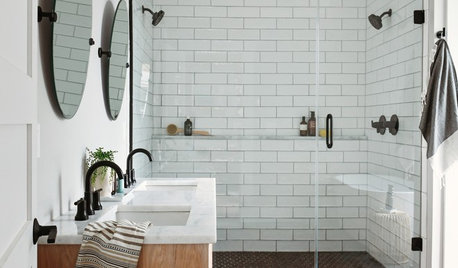Bathroom Fan/Vent Roof Cap Question
Larry Arabia
7 months ago
Related Stories

REMODELING GUIDESBathroom Workbook: How Much Does a Bathroom Remodel Cost?
Learn what features to expect for $3,000 to $100,000-plus, to help you plan your bathroom remodel
Full Story
HOUZZ TVBright, Breezy Living Room Caps a Hectic Renovation
After hitting a creative wall while remodeling, a Chicago couple turns to a design pro for help
Full Story
BATHROOM DESIGN8 High-Value Bathroom Upgrades to Know About
When you’re renovating a bathroom, every dollar counts. Here are eight things worth splurging on, the experts say
Full Story
ARCHITECTUREDesign Workshop: The Shed Roof
This popular — and versatile — form straddles the divide between contemporary and traditional styles
Full Story
REMODELING GUIDESWhy Marble Might Be Wrong for Your Bathroom
You love its beauty and instant high-quality appeal, but bathroom marble has its drawbacks. Here's what to know before you buy
Full Story
BATHROOM DESIGN9 Big Space-Saving Ideas for Tiny Bathrooms
Look to these layouts and features to fit everything you need in the bath without feeling crammed in
Full Story
HOUZZ TOURSHouzz Tour: A Self-Sufficient Farmhouse With a Sheep-Pasture Roof
LEED Platinum certification and a soil-covered top make this pastoral Virginia home green in more ways than one
Full Story
REMODELING GUIDESSurvive Your Home Remodel: 11 Must-Ask Questions
Plan ahead to keep minor hassles from turning into major headaches during an extensive renovation
Full Story
KITCHEN APPLIANCESLove to Cook? You Need a Fan. Find the Right Kind for You
Don't send budget dollars up in smoke when you need new kitchen ventilation. Here are 9 top types to consider
Full Story
BATHROOM OF THE WEEKBathroom of the Week: A New Master Bath in Black and White
In Pennsylvania, a bedroom is converted into a bright, airy and budget-friendly bathroom
Full Story





PPF.
Larry ArabiaOriginal Author
Related Discussions
Confused about venting a bathroom fan
Q
Question regarding Bathroom Exhaust Venting
Q
Venting 2 bathroom fans
Q
4" Bathroom vent through 4" roof vent has lots of space?!?
Q